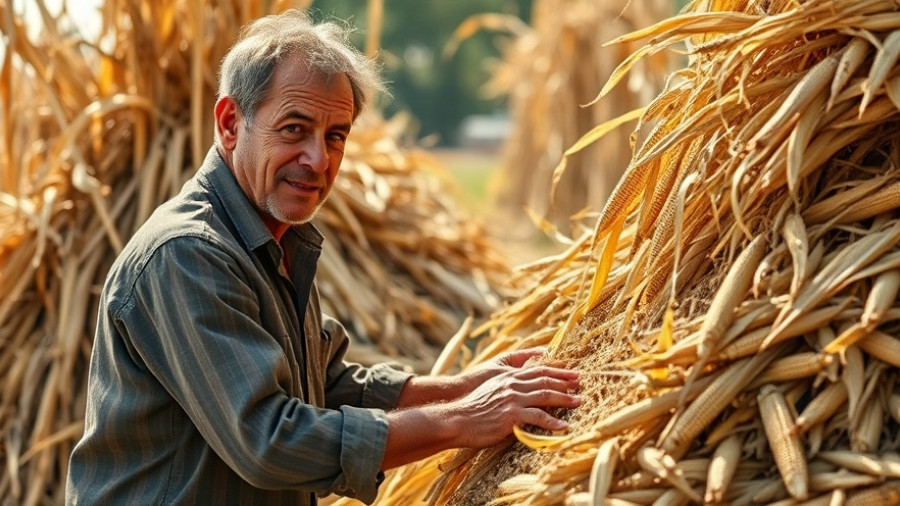
Zimbabwe Lifts Maize Importation Ban: A New Era for Regional Trade
The landscape of food security in Southern Africa has undergone a significant shift with Zimbabwe lifting its ban on maize imports. This development has been welcomed by the South African government, heralding it as a return to sound economic practices vital for the region's stability and prosperity.
The Economic Implications of the Ban Lift
John Steenhuisen, South Africa's Minister of Agriculture, emphasized that this move marks a crucial step towards ensuring food security across Southern Africa. The return to an open maize market is designed to stabilize local prices, with Zimbabwe's agricultural market being pivotal for both white and yellow maize.
“This is an extremely welcome development that underscores the collective responsibility we share in ensuring food sufficiency,” Steenhuisen noted, reflecting the optimism that the free flow of maize will rekindle regional trade relations and enhance consumer welfare.
Addressing Safeguards and Farmer Concerns
While the lifting of the ban appears beneficial, it brings to the fore the need for balancing the interests of local farmers. Critics may highlight the potential implications for Zimbabwe's agricultural sector, questioning whether the government can adequately protect local farmers as importation regulations adjust.
Indeed, Zimbabwe has introduced stipulations requiring processors to transition towards sourcing a percentage of their maize locally in the near future. Starting April 2026, 40% of annual maize intake must be sourced domestically, rising to 100% by April 2028. These regulations aim to ensure local agricultural support while still addressing immediate market shortages, showcasing a nuanced approach to food sustainability.
Market Reactions: A Signal of Confidence
The announcement to lift the import ban was met with a surge of responses from agribusinesses and local farmers. Agricultural economists advocate that this decision sends a strong signal of confidence throughout the agricultural ecosystem. It encourages investment in farming and production, aiming to replenish local supplies and attract trade opportunities.
Analysts like Wandile Sihlobo, Chief Economist at Agbiz, express that despite optimistic harvest forecasts by the Zimbabwean government, the reality paints a different picture, one that might necessitate continued reliance on imports. Sihlobo asserts that the recent market shortages indicate a possible shortfall in domestic production, questioning the validity of some government reporting on agricultural performance.
Future Projections for Maize Trade in Southern Africa
With the formal ban now lifted, there is an expectation for increased maize exports from South Africa to Zimbabwe and possibly Zambia. The trade dynamics are evolving rapidly, with experts predicting that Zimbabwe might require up to 700,000 tons of imported maize this season alone.
This shift in trade policy not only has implications for maize supply but could also bolster food prices in the region by stabilizing the fluctuating market. South African maize exports are projected to benefit significantly, as an increasing share of its output is likely to head into Zimbabwe—a country traditionally reliant on its larger neighbor for agricultural imports.
The Broader Impacts on Southern Africa's Food Security
The ramifications of Zimbabwe's decision stretch far beyond its national borders. The integration of trade policies amongst Southern African Development Community (SADC) nations is critical for ensuring food resilience and economic stability in a region often challenged by agricultural shocks and climate change impacts.
“By allowing the free flow of maize, particularly white maize that our people on the continent consume as a staple food, we are sending a clear signal of confidence to our agri-businesses and exporters,” said Steenhuisen, reaffirming the strategic importance of agriculture in the regional economy.
Call for Regional Collaboration and Fair Trade
The thriving agriculture sector relies heavily on predictability, and to achieve this, regional cooperation is fundamental. Both Zimbabwe and South Africa must work towards fostering an environment where trade is efficiently conducted, benefiting both local producers and consumers. Enhanced collaboration and fair trade initiatives will not only contribute to the prosperity of the respective countries but also establish a foundation for a robust agricultural market across Southern Africa.
In conclusion, Zimbabwe's decision to lift the maize import ban represents a pivotal moment for agriculture in the region, prompting broader discussions on food security, local support for farmers, and the intricate balance of trade practices. As stakeholders ponder the next steps, one thing remains clear: the interplay of local policy and international trade will significantly shape the agricultural landscape in Southern Africa for years to come.
 Add Row
Add Row  Add
Add 




Write A Comment